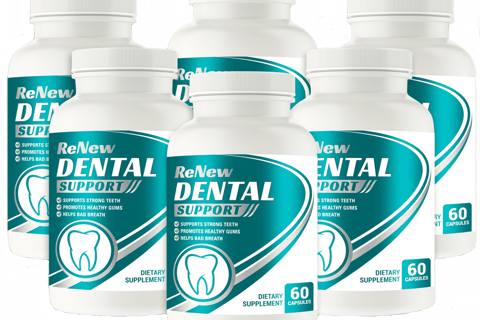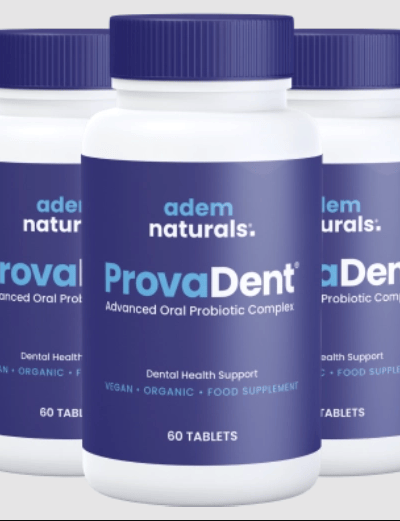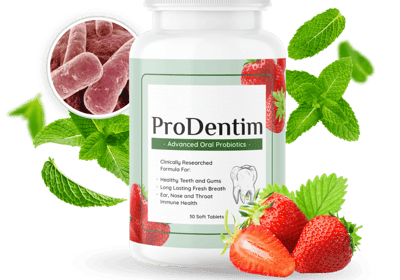Natural Teeth Whitening Tips for a Brighter Smile
Discover Natural Teeth Whitening Tips for a Brighter Smile backed by science. Learn about baking soda, oil pulling, and foods that brighten your smile without harsh chemicals. Plus, get expert tips on avoiding common whitening mistakes and maintaining results long-term.
NATURAL HEALTHY TEETH
Dr. Emma Hughes is an experienced dental health expert with over 15 years of clinical practice and academic research in preventive and restorative dentistry.
3/24/202518 min read
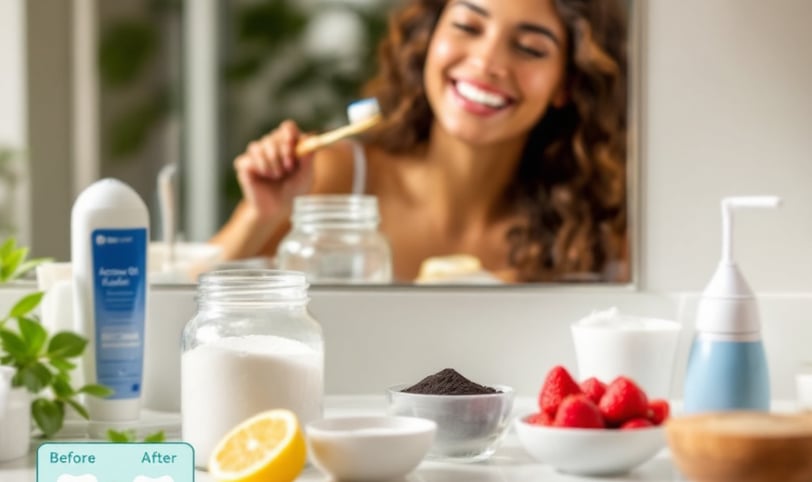

Key Takeaways
Natural teeth whitening methods are easy on the budget but take time and consistency.
Historical practices and modern techniques blend to form a range of whitening tips.
Common natural agents include baking soda, oil pulling, activated charcoal, and certain foods.
Hydrogen peroxide works by oxidation yet comes with risks like sensitivity and enamel damage.
Good oral hygiene and a balanced diet are key to maintaining a bright smile.
Consumer trends show a growing market, with significant differences across demographics.
Expert advice underscores moderation, informed choices, and regular dental consultations.
Introduction to Natural Teeth Whitening and a Brighter Smile
Ever sat there wonderin’ how folks manage to keep their smiles so bright without spendin’ a fortune? You might ask yourself, “Is natural teeth whitening actually effective?” Well, the answer is kinda yes but it ain’t magic—it’s just about using remedies that have been around for ages. I’ve tried a few tricks here and there, and sometimes it feels like a game of trial and error. Don’t ya think it’s a bit odd how simple ingredients can clear up stains over time?
In this article, we’ll chat about natural teeth whitening tips, drawing on historical curiosities and modern insights to create a guide that’s practical and down-to-earth. Some might wonder, “How can a few common household items impact the colour of your teeth?” The truth is that many ingredients interact with teeth in ways that help remove build-up and stains. For instance, a scoop of baking soda or a spoonful of coconut oil can go a long way if you use ‘em right. It’s not a miracle cure, but it does help brighten your smile gradually.
Have you ever pondered why natural methods are popular despite all the fancy products out there? The answer lies in their simplicity and safety in everyday use. Contrary to some high-priced products, these remedies rarely cause a sudden shock to your teeth, if you use them moderately. Also, natural methods are often supported just by regular brushing and proper oral care, something we all kinda know matters, right? For further reading on how to keep your teeth in top shape, check out Natural Healthy Teeth.
I gotta admit, sometimes I mess up my sentences while thinkin’ out loud, but that’s okay, it keeps the tone conversational and real. People ask, “Are these tips based on solid evidence?” Well, researchers have looked at both historical and modern data for teeth whitening, and while not every claim holds up in a lab, many tips do work when applied properly. It’s a blend of science and everyday wisdom. If you need an extra hand in understanding dental issues, have a look at Early Signs of Tooth Decay.
Don’t you find it interesting how our modern world is rediscovering remedies that were once used centuries ago? It’s kind of cool that the same ideas are still relevant—even if they’re explained in slightly different words these days. And while I’m all for using these tips, remember that consistency is key. So stick with a few methods and observe the changes over time. This guide, with its simple language and thoughtful advice, is here to help you make better choices for a naturally brighter smile.
Your Path to Optimal Dental Health
ProvaDent is a natural dietary supplement that aims to improve oral health


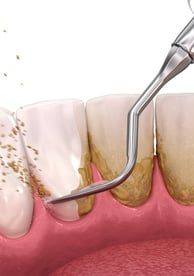

Aren’t you intrigued by how these methods have evolved? Besides the Roman experiments, ancient Egyptians used mixtures like ground pumice with wine vinegar to polish their teeth, and natron was also widely used. People back then were just tryin’ to get a whiter smile with what they had available. Some may ask, “Weren’t these methods risky?” Absolutely—many of the historical treatments were harsh on the enamel and led to decay over time. Yet, they laid the groundwork for what we now consider natural remedies.
In medieval times, doctors like Guy de Chauliac recommended blends like honey with burnt salt and vinegar to clean teeth. Can you believe they had to improvise so much with limited resources? The 17th century saw barbers filing teeth before applying potent acids to achieve a whitening effect. It sounds painful, doesn’t it? The methods, though crude, reveal an enduring desire for a bright smile throughout history. If you’re curious about the evolution of oral care, check out Your Path to Optimal Dental Health.
The evolution didn’t stop there. By the 20th century, more scientific approaches emerged. Dentists began using chlorine and then hydrogen peroxide around the 1910s, paving the way for safer whitening treatments. Back then, people were starting to trust modern science a bit more than the older, riskier methods. It’s a real mix of trial, error, and gradual improvement, don’t ya think? Sometimes the past can teach us a lot, even if it involves some methods that would seem downright crazy today.
Considering all these historical tidbits, you might wonder, “Are any of these old methods still useful now?” Well, not all of them are recommended, but they’ve certainly influenced modern practices like oil pulling, which has roots in ancient Ayurvedic tradition. These historical techniques remind us that even if the methods were odd, the quest for a whiter smile has always been there. Even if some of the old ideas sound outlandish, they provide a perspective on how conventional wisdom develops over time. For more on the evolution of dental care, you can visit Tooth Decay.
The mix of bizarre and practical methods from centuries past shows that humans have always been creative in overcoming natural challenges. It’s a reminder that while some ideas should be left in the past, others can be adapted safely with today’s knowledge. So, next time you use a natural home remedy, you might do so with a nod to those tried and tested techniques of old—even if you give a little shudder at the thought of ancient Roman recipes.
Modern Natural Whitening Methods: Baking Soda, Oil Pulling, and More
Ever wondered why so many folks still swear by natural whitening methods even today? It might sound odd, but simple ingredients like baking soda and oil pulling have stood the test of time. How do they work so well, you ask? The answer lies in their unique properties—baking soda gently polishes away surface stains, while oil pulling helps clean bacteria in the mouth.
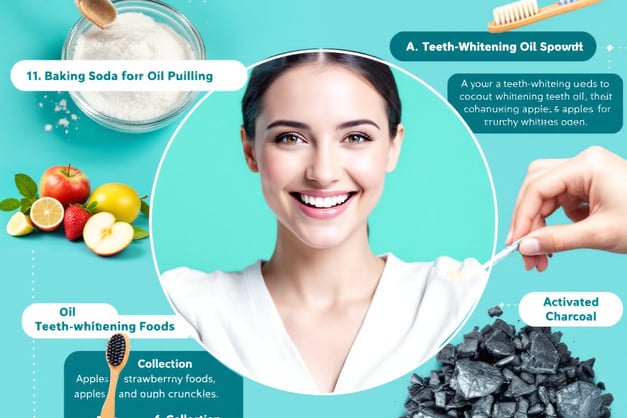

Let’s start with baking soda. Have ya ever mixed a pinch of it with water to brush your teeth? It acts as a mild abrasive, scrubbing away the build-up that causes discoloration. Some even mix it with a dash of hydrogen peroxide to boost its effect. But careful now—don’t go overboard because overuse can wear down the enamel. A simple rule of thumb is using it two to three times a week. Don’t ya feel it’s kinda cool how a common kitchen item can help brighten your smile? For more on maintaining oral health naturally, check out Natural Healthy Teeth.
Now, what about oil pulling? It might sound a bit strange at first, but oil pulling has been used in Ayurvedic practices for centuries. Ever tried swishing a spoonful of coconut oil around your mouth for 10 to 15 minutes? The idea is that the oil helps trap and pull out bacteria, which might contribute to a cleaner and slightly whiter appearance. It’s a low-cost and natural way to support overall dental hygiene. Sometimes it feels like nothing beats the simple things, doesn’t it? And if you’re curious about other products that can help, you might want to look at Dental Health Products.
Activated charcoal is another method gaining traction. Have you ever seen those charcoal toothpastes pop up online? The promise is that charcoal absorbs stains and toxins. However, don’t ya worry—it shouldn’t be used daily. Experts suggest limiting its use to a couple of times weekly because it can be a bit harsh on your enamel. While it’s a trendy fix, approach it with caution. I often ask myself, “Is this really better than my trusty baking soda?” Sometimes the old school ways work best.
What about using everyday foods for whitening? Certain fruits and veggies like apples, carrots, and celery can naturally help scrub away stains when you eat them, thanks to their texture. Dairy products, such as cheese and milk, are believed to help strengthen enamel with their calcium content. These natural remedies might not change your smile overnight, but they add up over time. Ever noticed how your smile gradually gets brighter when you stick to wholesome habits? It’s all about consistency!
Some folks also experiment with mixtures that include a splash of lemon juice or strawberry mash. But here’s a word of caution: the acids in these fruits can be pretty harsh if used too frequently. It’s best to keep such treatments as occasional treats rather than daily routines. While experimenting is fun and can occasionally lead to surprising results, moderation is always key.
In summary, the modern natural whitening methods offer a blend of simplicity and effectiveness. From the reliable cleaning power of baking soda to the ancient practice of oil pulling, these methods are accessible and affordable. They might not deliver instant miracles, but when used wisely and in combination with a good oral hygiene routine, they can help maintain a brighter, healthier smile over time. And isn’t it nice to know that sometimes the best solutions are the simplest ones? For further tips and tricks on keeping your smile in top shape, do visit Your Path to Optimal Dental Health.
Lifestyle Practices and Dietary Choices for a Brighter Smile
Ever noticed how your daily habits can either brighten your smile or leave it looking a bit dull? It’s kinda like askin’ yourself, “Am I eatin’ or drinkin’ the right stuff for my teeth?” Lifestyle choices play a big role in maintaining naturally white teeth. Let’s chat about how diet and routine can influence your smile in ways you might not expect.
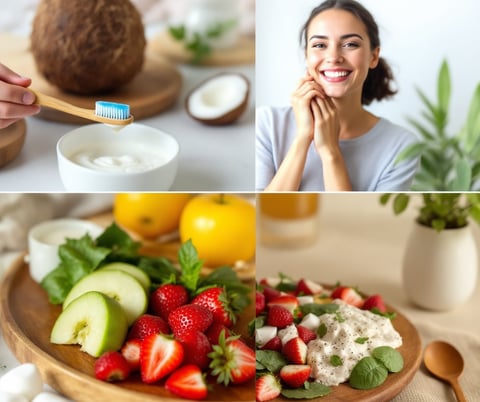

One of the first questions many ask is, “What should I avoid if I want whiter teeth?” Well, certain drinks like coffee, tea, red wine, and sodas are known offenders. They contain plenty of tannins and chromogens, which stick to your enamel and gradually stain it. Instead, think about swappin’ these out for water or herbal teas when possible. Have you ever wondered why a lot of dentists stress water intake? It helps rinse away particles and keeps your mouth fresher.
Next, let’s talk about foods that help rather than harm. Crunchy fruits and veggies like apples, carrots, and celery can be your best bud when it comes to a natural cleaning effect. They act like little brushes, scrubbing away plaque as you chew. Dairy products, like cheese and plain yogurt, not only taste good but also provide calcium that strengthens your teeth. Ever felt that slight satisfaction after crunching on a crisp apple? That’s your teeth gettin’ a little polish on the side!
Good oral hygiene practices are a must too. Make sure you brush at least twice a day with a fluoride toothpaste and floss regularly. It might seem basic, almost boring, but these habits are the foundation for a great smile. When you brush and floss, you remove food particles and stains that could otherwise lead to discoloration. It’s just common sense, innit? And for more detailed info on hygiene practices, you can check out Dental Health Products.
Regular dental check-ups also go a long way in preventing issues and keeping your smile bright. You might ask yourself, “How often should I see a dentist?” Most experts say at least twice a year, but if you’re really serious about maintaining whiteness, you could even add an occasional professional cleaning to your routine. With constant advancements, dental care now offers gentle options for cleaning and whitening without overdoing it. Sometimes, a bit of professional care coupled with good home routines can make all the difference.
Lifestyle choices aren’t just about what you do—they’re also about what you choose to use on a daily basis. For instance, many folks are now optin’ for natural mouthwashes and toothpastes that avoid harsh chemicals yet keep your mouth fresh. It’s a balance of tradition and modern updates, and it all comes down to watchin’ what you consume and how regularly you care for your teeth. Often, I find myself wonderin’, “Aren’t these simple dietary and hygiene choices enough to make a noticeable difference?” And yep, they really can if you stick with ‘em.
Lastly, avoid habits like smokin’ or chewing tobacco, which are notorious for staining teeth and harming overall dental health. Smoking not only darkens your teeth but also affects your gums and breath. It’s a habit that undermines all the good work you might put into your brushing routine. For more guidance on improving dental care, you might want to visit Tooth Decay.
Overall, incorporating the right dietary choices and daily practices can have a big impact on maintaining a naturally bright smile. Simple changes in what you eat and drink, combined with a solid oral care routine, set you up for long-term benefits. It’s all about making those small decisions each day that add up to a healthier, whiter smile over time.
Understanding the Role and Risks of Hydrogen Peroxide
Ever stopped to think, “Why do so many whitening products tout hydrogen peroxide?” It’s a common ingredient in many tooth-whitening formulations, but how does it actually work? And what risks might it carry? Let’s chat about the science behind it and the potential side effects, without getting’ too technical.
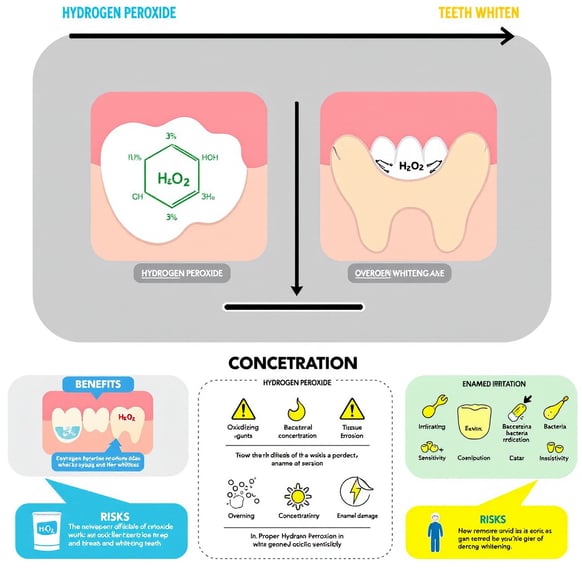

Hydrogen peroxide whitens teeth by breakin’ down stains through oxidation. Imagine it as a tiny chemical cleaner that reacts with the molecules responsible for discoloration. When applied to the tooth’s surface, it seeps into the enamel and starts oxidizing the stain compounds, turning them into smaller, less visible particles. Doesn’t that sound neat? However, while this process can visibly enhance whiteness, it’s not without its risks. You might be askin’, “Why would something that cleans be dangerous?” The answer is in the concentration and frequency of use.
Using hydrogen peroxide at low concentrations, typically below 10%, is generally considered safe for at-home treatments. But, if you use it too often or in too high a concentration, it could spur tooth sensitivity or even damage the enamel. Over time, this damage can make your teeth more susceptible to decay and sensitivity. I’ve seen cases where overuse led to uneven whitening and gum irritation. Always remember, moderation is essential. For additional dental advice on safe practices, visit Renew Dental Support.
It’s also worth noting that hydrogen peroxide doesn’t work miracles on dental restorations. Fillings, crowns, and veneers won’t change color, which can result in an uneven appearance. Isn’t it odd how the very treatment that lightens the natural tooth can’t affect artificial ones? In such cases, professional advice is critical. If you’re wondering how to balance natural methods and professional care, you might want to learn more at Brand New Probiotics Specially Designed for the Health of Your Teeth and Gums.
Another frequent question is about the long-term safety of hydrogen peroxide. Studies have shown that while short-term use is generally safe, prolonged exposure can lead to more serious issues like enamel erosion and gum recession. These side effects underline the need for a careful approach, especially for users with already sensitive teeth. Don’t ya think it’s best to check with a dentist before startin’ any hydrogen peroxide regimen? It’s always good to get a professional opinion if you’re not sure about the right concentration and frequency for your needs.
Despite these risks, many users find that hydrogen peroxide works wonders when used correctly. Its ability to tackle both extrinsic (surface) and intrinsic (deep) stains makes it a popular choice. Just be mindful that every smile is different, and what works for one person may not work for another. Curious about how your skin-care and dental routines overlap? It’s all about finding balance and listening to your body.
In conclusion, hydrogen peroxide remains a widely used agent for teeth whitening, but like any chemical application, its use should be carefully managed and tailored to your specific needs. The key is understanding that while it offers impressive whitening benefits, ignoring proper usage guidelines can lead to more harm than good. So, if you’re thinkin’ about using a hydrogen peroxide-based product, educate yourself on the right practices, and don’t hesitate to ask your dentist for advice. For further insights on maintaining safe dental practices, you can also explore Your Path to Optimal Dental Health.
Market Trends and Consumer Insights in Teeth Whitening
Ever noticed how trends in teeth whitening can change based on time, region, and even gender? When you look at the numbers, the world of whitening is as diverse as it is profitable. In fact, the global teeth whitening market has been growin’ at about 5.0% annually, with projections takin’ it to almost $8.94 billion by 2029. Sounds impressive, right? But what drives this constant growth and interest?


A lot of it comes from consumer behaviour changes. For example, while many shop for whitening products in physical stores—which still account for 61% of overall sales—online purchases are skyrocketin’, growing roughly six times faster than traditional retail channels. Doesn’t that make you curious about what might be behind such a massive shift? It seems that convenience and price comparisons online are real game changers.
Market data also reveal interesting differences in product preferences. In 2021, whitening toothpaste alone made up about 33% of all sales. That shows people are leaning toward everyday, easy-to-use products rather than expensive treatments. It’s kinda like havin’ your cake and eatin’ it too—you get everyday care with a side of whitening benefits. For a deeper dive into how different dental products affect your routine, visit Dental Health Products.
There’s also a notable demographic split in the use of traditional whitening methods. Research from Saudi Arabia, for instance, found that roughly 45% of males used charcoal powder while only 25% of females did the same. Why might that be? Well, gender differences in whitening choices often reflect varied attitudes toward aesthetics and health priorities. Additionally, studies show that lower-income individuals tend to be more dissatisfied with their tooth colour than their higher-income counterparts. Ever wondered if affordability really plays a role in choosing a whitening method? The data seems to say yes, as cost-effective natural remedies are a go-to for many.
Another curious insight is the dynamic in dental professional referrals. About one-third of orthodontists offer whitening treatments themselves, while nearly two-thirds refer patients to other specialists. You might ask, “Does this mean professional whitening is too specialized to handle at the dentist’s office?” It seems that while many practitioners support natural and professional whitening treatments, they prefer to keep their offerings within specific safe boundaries.
Looking at consumer feedback, there’s a trend for favoring natural methods that blend simplicity with effectiveness. Women, in particular, have shown a higher interest in teeth whitening solutions, with one study indicating nearly 72.3% of interested participants were female. Such insights suggest that product formulations and marketing (or, more precisely, informative content) might increasingly cater to these demographics. For further reading on consumer trends and dental health, check out Early Signs of Tooth Decay.
Lastly, internal links and product reviews on trusted websites are influencing buying decisions. Consumers feel more reassured when they can read detailed product specifications and genuine user experiences. The trend reinforces the importance of transparency and clear communication in dental product offerings. It’s a reminder that even in the realm of natural remedies, informed choices and reliable data matter a whole lot.
In summary, the teeth whitening market is a vibrant mix of traditional techniques and modern consumer habits. The growth in online sales, changing demographic preferences, and evolving product offerings all echo a larger trend toward natural, accessible, and scientifically informed solutions. It’s fascinating how numbers and behavioural studies can shape our choices every day, don’t ya think?
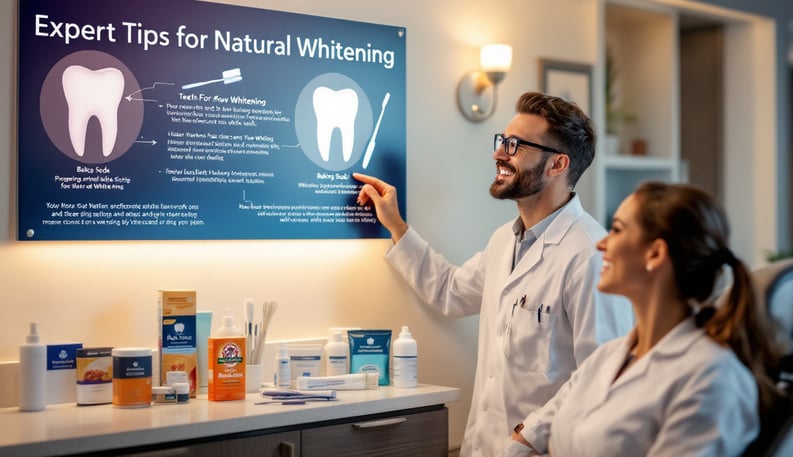

First off, consistency is key. Whether you’re usin’ baking soda, oil pulling, or a natural toothpaste, regular practice ensures that you see gradual improvements. Ever wonder why some people see results faster than others? A lot of it is due to how persistently they follow a routine. In my own experience, a routine that blends simple home remedies with proper oral hygiene delivers the best results. Don’t ya think it’s better to stick with a proven method rather than try every new fad that pops up?
Secondly, moderation goes a long way. For instance, while baking soda is a gentle abrasive, using it too often can end up wearin’ down your enamel. I recall askin’ a buddy who’s a dentist, “How often should I use these home remedies?” He said that a few times a week is plenty, and that’s solid advice. When in doubt, less is more, and you can always supplement with other milder treatments like oil pulling. For more insights on natural approaches, consider visitin’ Natural Healthy Teeth.
Additionally, it's really important to tailor your approach based on your personal needs. My advice is to always check your teeth for sensitivity or changes. If you notice any discomfort or uneven whitening, it might be a sign to slow down or switch up your technique. This kind of self-monitoring is something even experts emphasise. Don’t ignore small signs; sometimes our bodies tell us what we need.
Another neat tip is to incorporate a balanced diet to support your dental health. Foods rich in calcium and phosphorus, like dairy products, work nicely in conjunction with your whitening regimen by helping strengthen enamel. Also, eating crunchy fruits and vegetables can naturally stimulate saliva production, which acts as a safeguard against stains. Simple changes in your diet can make a big difference over time. And if you want more detailed health info, check out Your Path to Optimal Dental Health.
A word of caution when using any whitening product—natural or otherwise—is to be patient. Natural methods don’t give immediate results. It might take a few weeks before you notice a brighter smile, so resist the urge to ramp up the frequency too quickly. I’ve seen plenty of folks get frustrated and overdo it, which only leads to issues like sensitivity. I always tell people, “Stick with it, be patient, and let your smile evolve gradually.”
Also, don’t shy away from professional advice. Regular visits to your dentist can help you catch any potential problems early. Experts recommend scheduling check-ups at least twice a year, and sometimes more if you’re pursuing an intensive whitening regimen. These check-ups are a good chance to get personalized tips that suit your dental structure and overall health. For additional reading on professional dental care, you might want to check out Tooth Decay.
In closing, expert advice on natural teeth whitening comes down to following a safe, consistent, and balanced approach. The little habits you build over time—coupled with being mindful of any changes—will help you maintain a naturally bright smile. It’s a journey of small steps and continuous fine-tuning. And remember, every smile is unique and so is every method. So, experiment within safe limits and always listen to your body’s feedback. These practical tips are here to help you navigate your personal route to a naturally whiter smile.
Frequently Asked Questions and Concluding Thoughts
Have you ever got a question in the middle of your whitening routine and thought, “What’s the deal with natural methods?” In this final section, we tackle some of the most common questions and wrap up our discussion with some final thoughts.
Frequently Asked Questions and Concluding Thoughts
Can natural teeth whitening methods deliver the same results as professional treatments?
They usually deliver more gradual improvements compared to professional treatments. Natural methods are best for maintaining’ good oral hygiene and addressing surface stains but aren’t a shortcut to a dazzling smile overnight.
How long does it typically take to notice a difference using these methods?
Most people observe subtle improvements over several weeks. Consistency is key, and results come with regular use and proper oral care routines.
Are there any risks if I use these natural methods every day?
Some methods, like overusing baking soda or activated charcoal, can eventually harm your enamel. Moderation is important, and if you notice sensitivity or other issues, take a break and consult with your dentist.
What should I do if my whitening efforts seem to cause discomfort or sensitivity?
Stop the treatment immediately and consider altering the frequency. It's always a good idea to talk to a dental professional who can advise on safe practices tailored to your needs.
For more dental advice on staying safe while whitening, you can check out Renew Dental Support.
Are natural remedies like oil pulling really effective?
While oil pulling has been used for centuries and can improve overall oral hygiene, its effects on whitening are more subtle and work best when combined with a balanced diet and regular brushing
Where can I learn more about you?
You can explore other sections of this website, such as the "About Us" page or our blog, to learn more about our company, mission, and team.
Our Products
Provide a general summary of the services you provide, highlighting key features and benefits for potential clients.
Renew Dental Support
Brushing twice a day is good for your teeth... right? WRONG. ❌
ProDentim
The supplement repopulates your mouth with good bacteria, addressing the imbalance in oral health caused by a lack of good bacteria.35
ProvaDent is a natural dietary supplement that aims to improve oral health
ProvaDent
In conclusion, natural teeth whitening tips offer a balanced approach to brightening your smile without relying on harsh chemicals or expensive procedures. The journey may seem slow, and sometimes you might feel a bit uncertain about which method to trust, but it’s all about combining the simple wisdom passed down through history with modern insights. Every routine is personal, and the best strategy involves being patient, consistent, and mindful of your own dental health.
We’ve talked about historical practices, modern techniques, lifestyle factors, the role of hydrogen peroxide, and even dug into market trends. All this info comes together to form a simple, straightforward guide aimed at helping you make informed decisions for a brighter smile. Remember, sometimes the simplest approaches end up being the most effective. Stay informed, keep it simple, and always listen to your body’s cues.
Did ya find the answers you were lookin’ for? If you’ve got more questions, feel free to explore additional resources or drop a comment below. Let this be your go-to guide as you continue on your journey towards a naturally white, healthy smile.
Dental
Explore tips for maintaining healthy teeth and gums.
Care
Advice
+07585653512
© 2024. All rights reserved.

